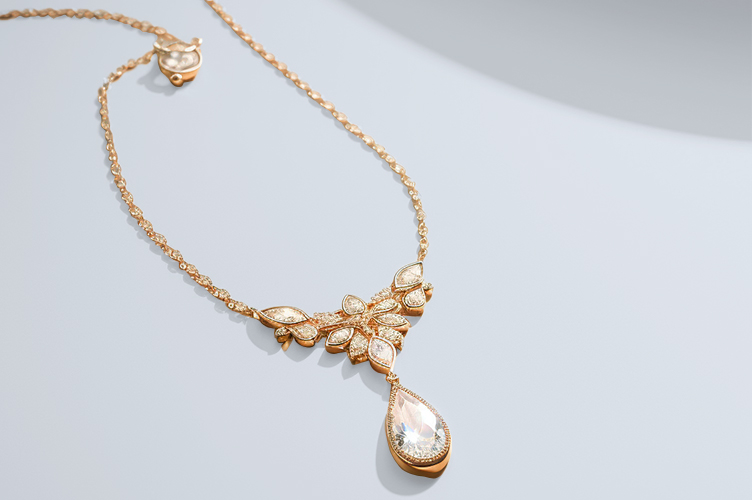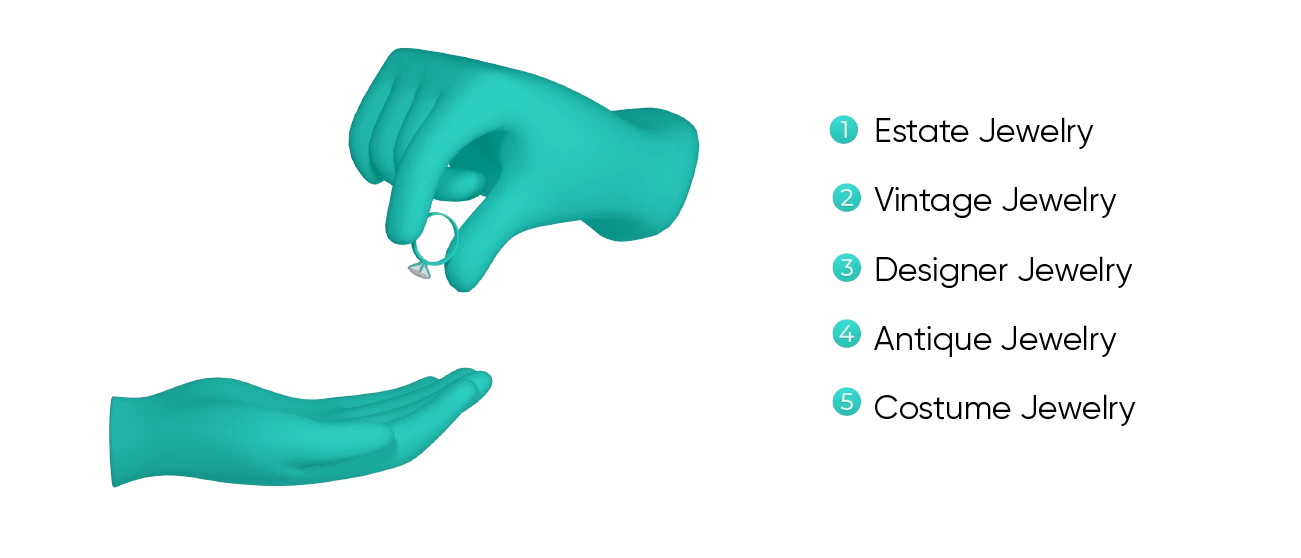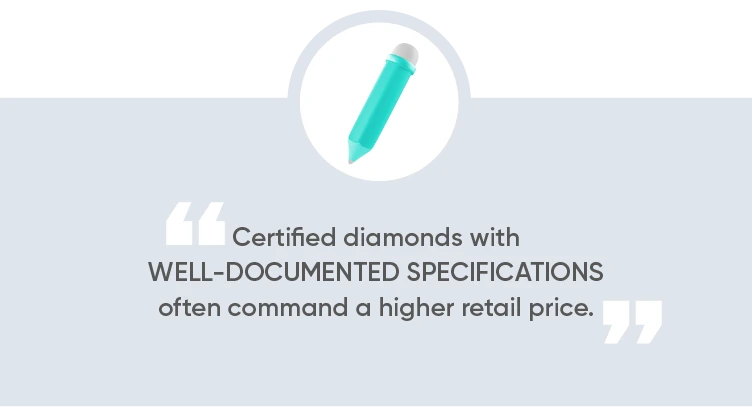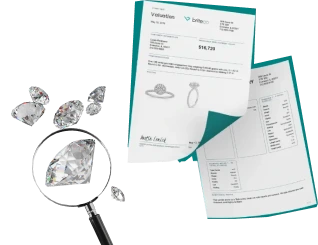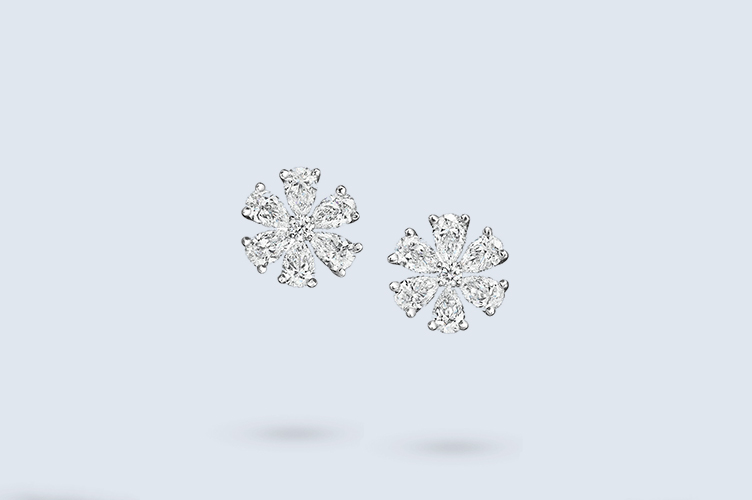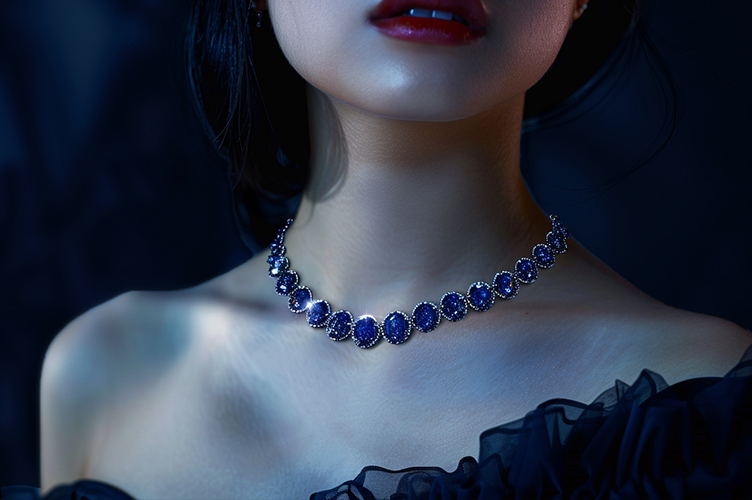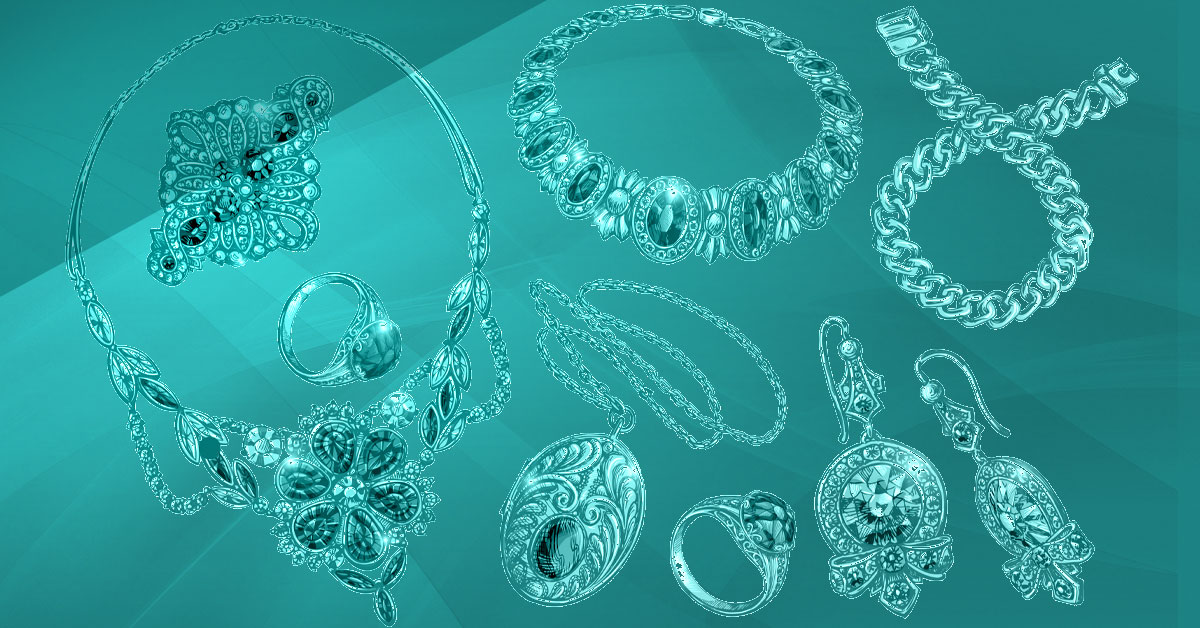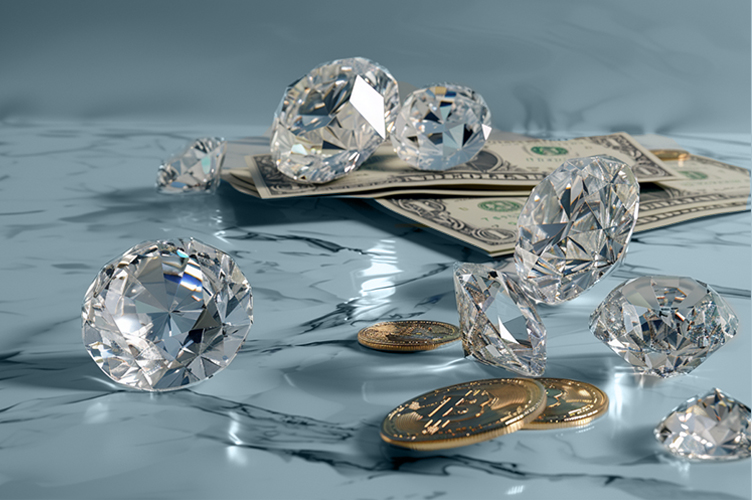Inheriting jewelry is sometimes a bittersweet experience. On one hand, you’re receiving a piece of your family’s history, precious heirloom jewelry with sentimental value. On the other hand, you might not actually like the jewelry.
While you could just let the jewelry sit in a box, you could also consider selling inherited jewelry that’s come into your possession.
Here’s what you need to know about the best way to sell inherited jewelry.
What You Will Learn
Step 1: Know What You Have
Before you rush to sell your inherited jewelry, it’s important to understand what you have, as that will impact how much you can sell your jewelry for and where you can sell it.
Types of Commonly Inherited Jewelry
- Estate Jewelry: Estate jewelry is a broad category encompassing previously owned fine jewelry, from diamond rings and luxury watches to beautiful brooches and necklaces.
- Vintage Jewelry: Vintage pieces are characterized by their age and unique designs, reflecting a specific era or style.
- Designer Jewelry: These pieces from well-known designers often have a higher market value due to brand recognition. Examples include pieces from Tiffany & Co., Cartier, and Bulgari.
- Antique Jewelry: Antique jewelry is typically more than 100 years old and carries historical and collector’s value. Pieces from the Victorian, Edwardian, and Art Deco eras fall into this category.
- Costume Jewelry: While not typically made of precious materials, costume jewelry can still hold sentimental value. Costume jewelry includes pieces made from base metals, imitation gemstones, and plastics.
Pause for a Moment Before You Sell
Have you identified what kind of jewelry you’ve inherited? In that case, you’ll want to pause for a moment before you begin the sales process to consider a few factors.
What’s the sentimental value?
Before selling, think about the pieces’ emotional value. Balancing sentimentality with market value is important. Some items may hold immense sentimental value, making them priceless to your family, and you may just find you don’t want to sell them after all.
Is this heirloom jewelry?
Sometimes, certain jewelry items may have a significant family history and are family heirlooms. These pieces should be preserved if possible, passed down through generations to honor their legacy. You likely won’t want to sell heirloom jewelry unless absolutely necessary.
Did you have the inherited jewelry appraised by professional appraisers?
To determine the market value of your jewelry, consider getting a professional appraisal. A professional appraiser and jewelry expert can evaluate each piece, accounting for factors like the quality of gemstones, metals, craftsmanship, and historical significance.
Have you contacted your insurance company?
If the piece of jewelry is insured, notify your insurance company about the change in ownership or any plans to sell it. Adjust your policy accordingly to protect the jewelry’s value.
Step 2: Research the Market
Once you’ve considered all the above, it’s time to research the market.
To make informed decisions about selling your inherited jewelry items, you need to understand market dynamics and how to get the best value for your items. Take time to do some research on the…
Jewelry Resale Market
The jewelry resale market is diverse and encompasses various types of jewelry, from diamond rings to precious metals like gold and silver. Understanding the market trends and demand for different types of jewelry can help you position your items.
Diamond and Diamond Ring Resale Market
Engagement rings and other diamond jewelry pieces can fetch high prices in the resale market, especially if they feature high-quality diamonds with excellent cut, clarity, color, and carat weight (known as the “Four Cs“).
If you have loose diamonds, consider their grading and quality when determining their market value. Certified diamonds with well-documented specifications often command a higher retail price.
Precious Metals and Scrap Gold Market
The value of gold and other precious metals fluctuates with market conditions. Keep an eye on current prices, as this can significantly impact the value of your inherited jewelry items.
Luxury Watches Market
Luxury watches are in high demand with collectors. Brands such as Rolex, Patek Philippe, and Audemars Piguet are known for their great value and appeal. Factors like brand, model, condition, and presence of original documents (like the watch or jewelry box and papers) all influence resale value.
Vintage and Antique Jewelry Market
Research the specific era or style of your vintage or antique jewelry to understand its market potential better. Historical significance and craftsmanship play a significant role in these pieces’ value.
Step 3: Time to Sell! How To Sell Inherited Jewelry
Once you have a good grasp of your jewelry’s actual value, it’s time to explore selling options.
In-Person Options
- A Local Jewelry Store: Many local jewelers buy fine jewelry and may offer competitive prices. They often have a strong network of buyers and can provide insights into the local market.
- Pawn Shops: Pawn shops are an option for quick cash but often offer lower prices than specialized buyers. If you need immediate funds and are willing to accept a lower value, a pawn shop may be a viable choice.
- Auction House: High-end jewelry may do well at auctions, but fees and commissions can eat into your profits. Auctions can be suitable if you have rare or valuable pieces with broad appeal.
Online Marketplaces
- Online Jewelry Buyers: Reputable online jewelry buyers (businesses, not individuals) will conveniently purchase your items at competitive prices. When researching how to sell online, look for companies with positive reviews, transparent processes, and clear communication channels.
- An Online Auction Site: Online auction sites, such as eBay, reach a wide audience and can potentially lead to higher bids. However, managing an online auction can be time-consuming, and success depends on factors like item descriptions, photographs, and marketing efforts.
- Direct Link to Buyers: Selling directly to collectors or enthusiasts can eliminate middlemen and yield better returns. You can find a jewelry buyer through social media platforms, online forums, or by attending jewelry trade shows.
You’ll need to consider the advantages and disadvantages of each of these options, including the speed of sale, convenience, potential returns, and emotional toll. Balance your need for immediate cash with the desire for the best retail price. Your sales process choice may vary depending on your financial circumstances, timeline, and the specific jewelry items you wish to sell.
Suggested Read: How To Build A Strong Digital Presence For Jewelers
Step 4: What to Do Once You’ve Attracted Interest
Congratulations! You’ve found an interested buyer. What do you need to do next?
- Prepare Your Jewelry
Ensure your piece of jewelry is in the best condition possible. Clean pieces gently and make any minor repairs or adjustments needed. Consider investing in professional repairs if your jewelry has significant damage or wear. Hire reputable jewelers who specialize in the specific type of jewelry you own.
- Charge a Fair Price
When considering appraised value vs. market value, base your selling price on market conditions rather than appraisal value. An appraisal estimates the item’s worth but may not reflect current market demand or trends.
Once you’ve found an interested buyer, you’ll begin negotiating a fair market price. Be prepared to negotiate with potential jewelry buyers to reach a mutually satisfactory deal. Flexibility in negotiations can lead to a successful sale.
- Prioritize Honest Communication
Before the sale is finalized, discuss your intention to sell inherited jewelry with other family members to avoid conflicts or misunderstandings. Honesty and sensitivity are key when addressing sentimental attachments.
Use Insured Shipping
Once the sale is finalized, if you’re shipping the jewelry to the buyer, protect the jewelry during transit by using insured shipping methods. This safeguards your items against loss, theft, or damage while in transit to the buyer.
FAQs
What can you do with inherited jewelry?
If you’re wondering what to do with inherited jewelry, you really have two options: keep or sell the jewelry. Remember that you don’t have to sell or keep all of it. Maybe you keep an amazing ring but sell the rest of the jewelry collection. That heirloom piece or vintage engagement ring is yours now, so you can do whatever you want with it.
Should you sell your relatives’ jewelry?
When you wonder how to sell grandma’s jewelry, you might feel a little guilty. However, don’t feel bad if you choose to sell your inherited jewelry items. Many inheritors sell inherited jewelry, particularly if the pieces don’t align with the new owner’s personal style.
Decided to Keep Your Inherited Jewelry? Protect It
Selling inherited jewelry can be a difficult process, even if you know you can get the highest price possible for it. If, after open and honest communication with a family member and/or jewelry experts, you’ve decided that selling inherited jewelry isn’t right for you, you’ll want to ensure that your newly inherited jewelry is properly protected.
That’s where BriteCo comes in. We offer comprehensive and cost-effective jewelry insurance for engagement rings, family heirlooms, antiques, luxury watches, and every type of jewelry in between.
Learn more and get your free quote.
Also Check:
Jewelry for a Strapless Dress | BriteCo Jewelry Insurance
The Best Jewelry for High Neck Dress Outfits

